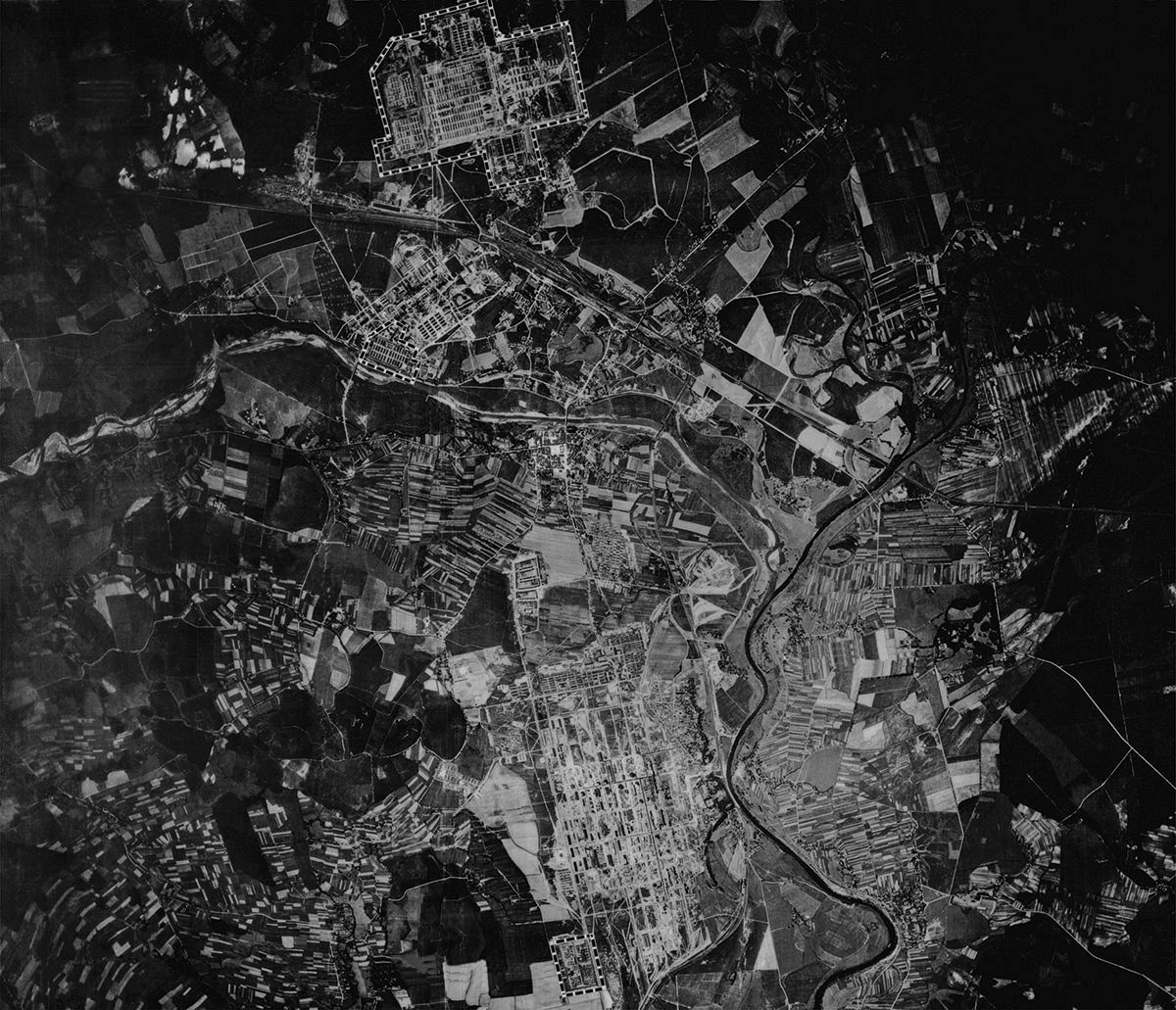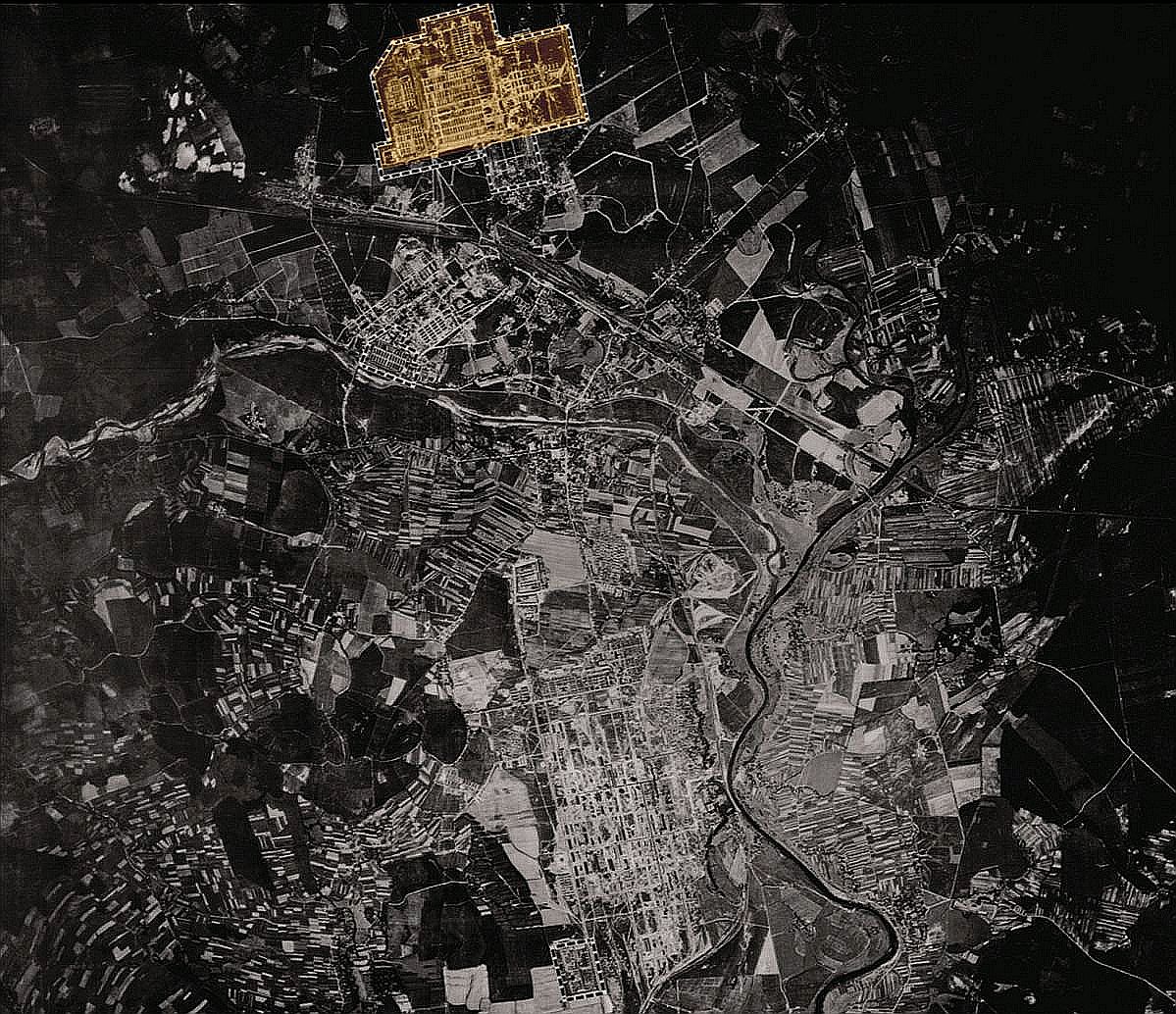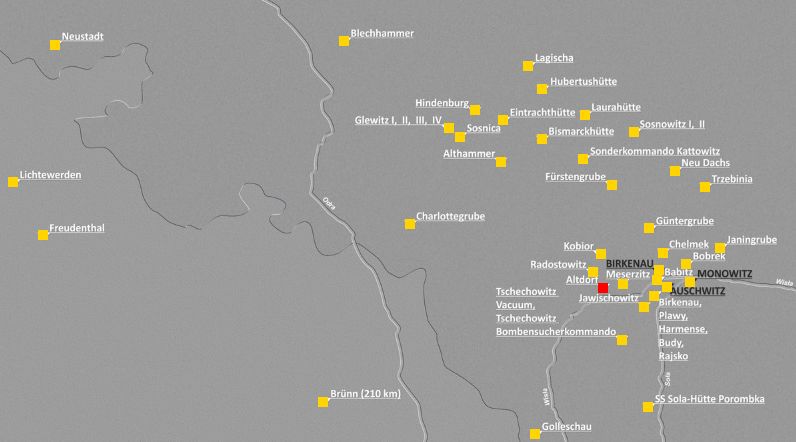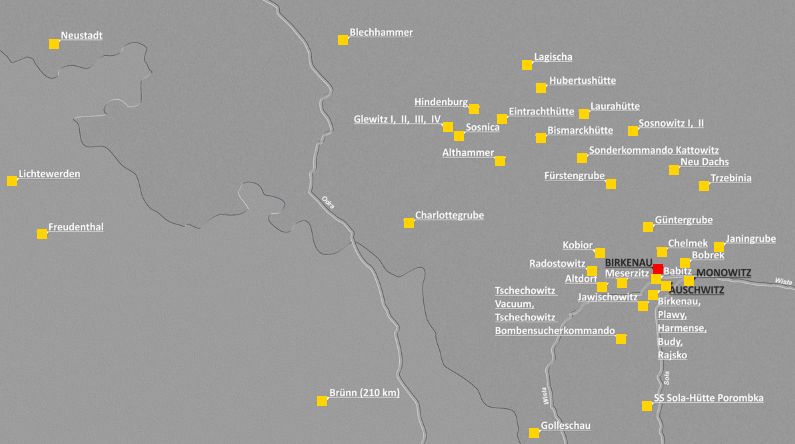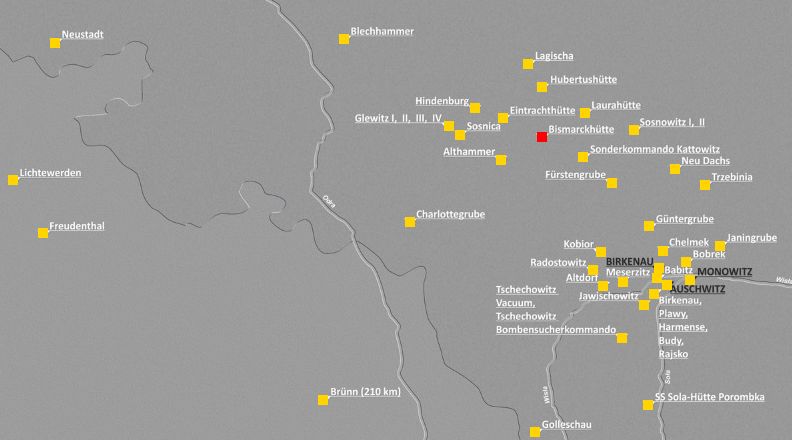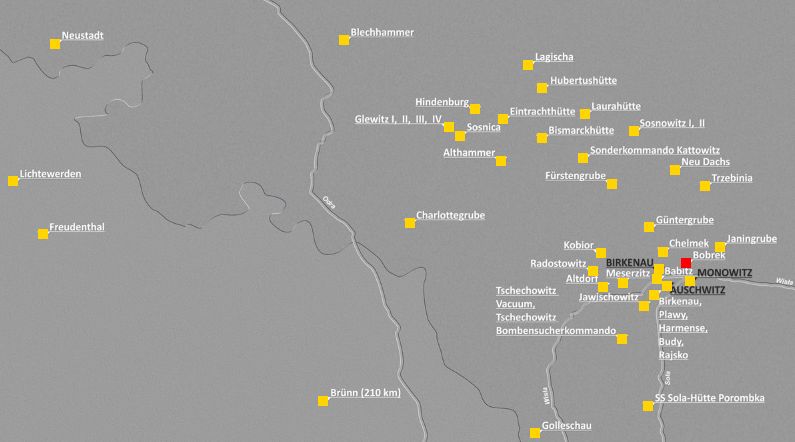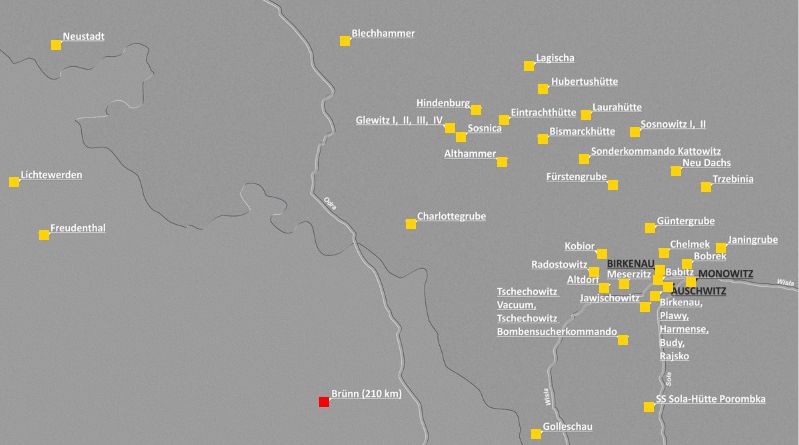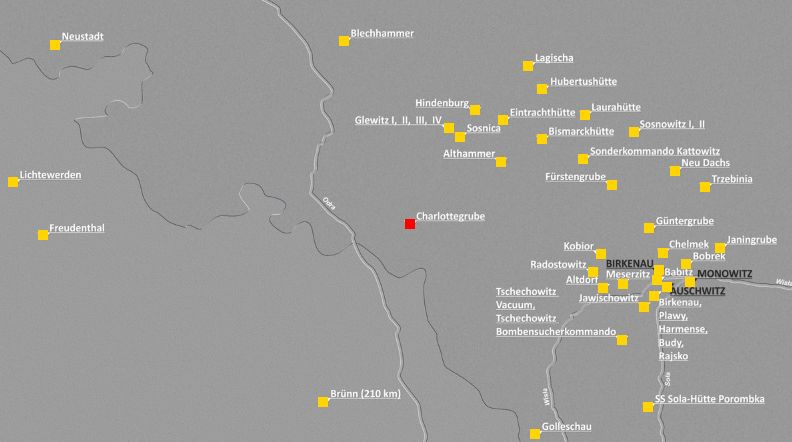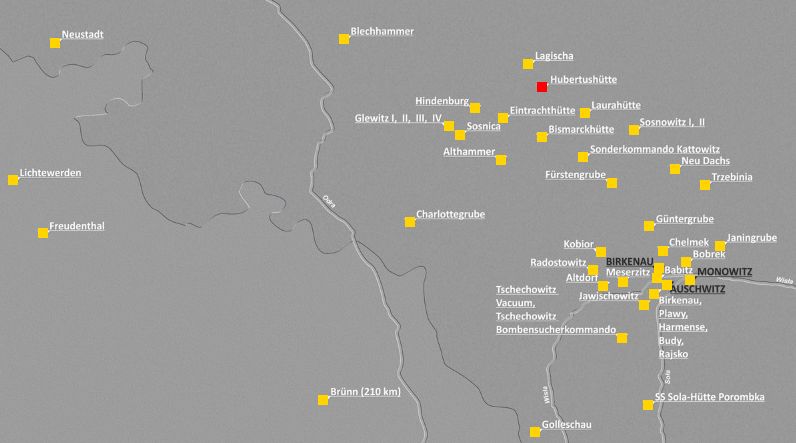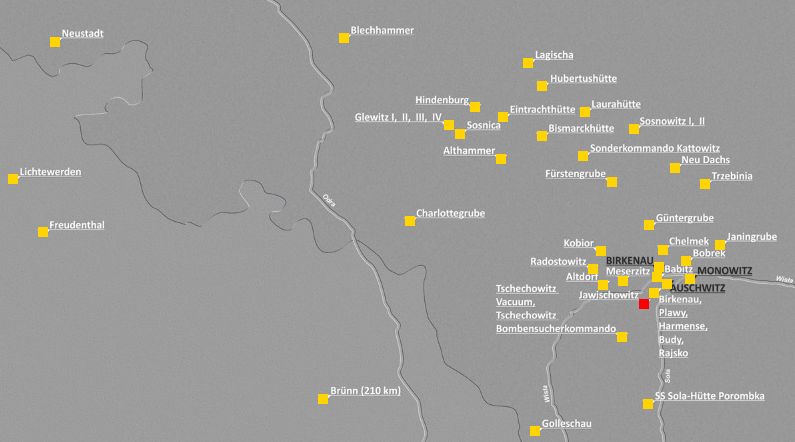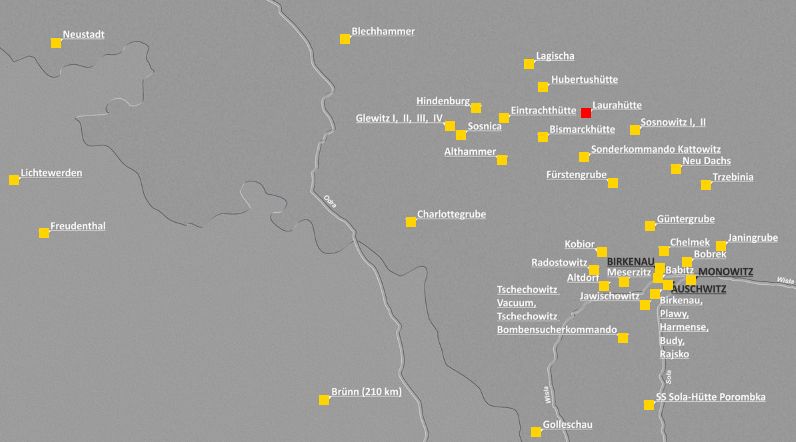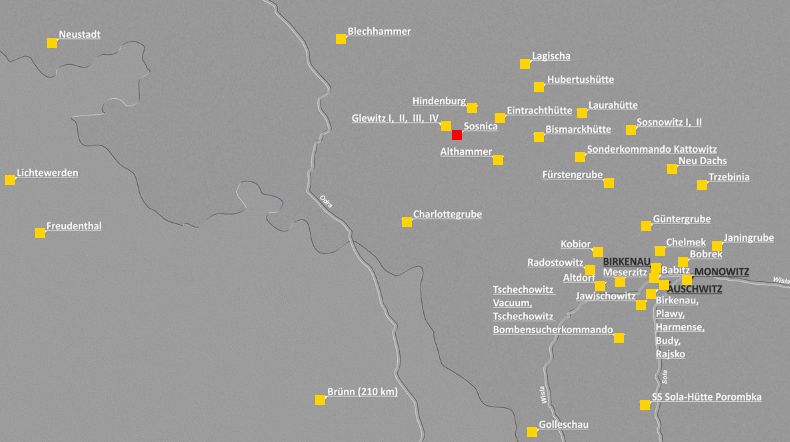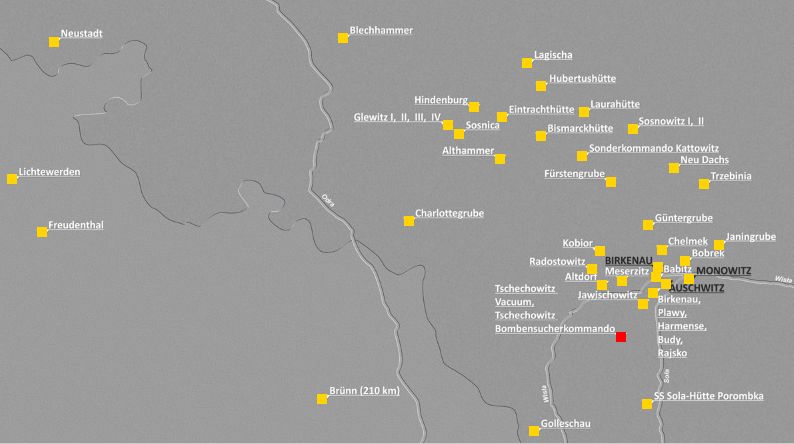In 1941 the SS authorities began expanding the Main Camp and building a new camp on the site of a neighbouring village called Brzezinka (Birkenau in German). First they evicted the inhabitants of several nearby settlements and converted the evacuated area into a ‘zone of interests’, within which the camp had its own arable and animal husbandry farms. In 1942, on the site of the village of Monowice (Monowitz) they founded a third camp, called Buna (or Monowitz), near a chemical factory complex built by the German IG Farbenindustrie concern. In time, Auschwitz became the largest Third Reich concentration camp complex.

